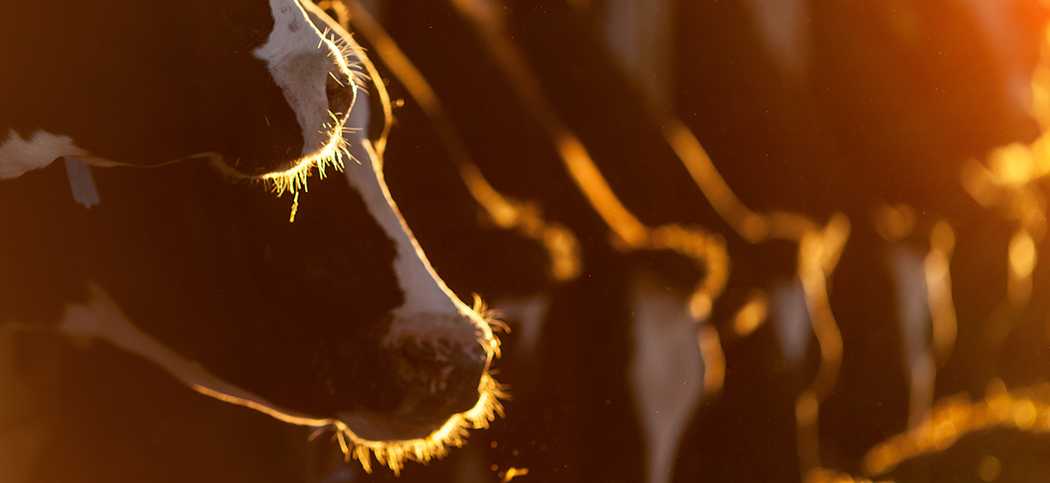
Cows + Climate Change - How Environmental Changes Are Impacting The Dairy Industry
July 12, 2022
Researchers at the Ontario Veterinary College (OVC) are working to identify dairy cattle that are genetically resistant to heat stress and better able to withstand the issues associated with climate change.
Climate warming presents numerous environmental challenges, including more frequent extreme weather events such as heat waves.

Climate change is anticipated to significantly impact the Canadian agricultural industry, as livestock struggle to adapt to constant changes in environmental conditions. Dairy cattle are especially affected as they have been identified as one of the most prone livestock species to elevated temperatures and high humidity.
Heat stress in cows occurs when they generate and absorb more heat that they can easily get rid of through respiration or sweating. When exposed to heat stress, dairy cattle can face reproductive issues, reduced milk production, and increased health issues.
Shannon Cartwright, a PhD candidate in OVC’s Department of Pathobiology, is leading research to identify dairy cattle that are more thermotolerant – or resistant to heat stress - and thereby resilient to climate change. Cartwright hopes her research will address the problems associated with heat stress for dairy cattle, as well as help to alleviate the pressure of climate change on the dairy industry as a whole.
“I have always been passionate about the dairy industry and finding ways to help dairy producers and cattle,” says Cartwright. “If we don’t identify animals that are resilient to heat stress, we will face increasing issues with dairy cattle as our climate continues to warm.”
Cartwright is advised by Dr. Bonnie Mallard, the inventor of the High Immune Response and Immunity+ technologies that identify naturally healthier cows with optimized immune responses. It has been shown that these ‘high immune responders’ have lower disease incidence, improved vaccine response and better hoof health.
Based on these findings, Cartwright and her team “wanted to determine if we could also see variability among cattle evaluated for immune response in their response to heat stress.” Their research has shown these high immune responding cattle are likely to be more resilient to heat stress than low immune responders, but now, Cartwright wants to identify why high immune responding dairy cattle may be more resilient to heat stress.
So far, Cartwright has shown that high immune responding cattle produce a greater number of molecules that protect their cells during heat stress events compared to average and low immune responding cattle. Heat stressed high immune responding cattle may also exhibit increased expression of genes related to cellular protection when compared to low responders.
Cartwright’s most recent publication demonstrated that high immune responding cattle exhibit increased proliferation of cells of the immune system during heat stress, which could help to protect against invading pathogens and likely reduce disease incidence. She is now investigating whether differences in cellular metabolism between high and low immune responders may be the reason why high immune responders seem to be more resilient to heat stress.
“It is important to understand the mechanisms that may be contributing to heat stress resilience in high immune responders so that we can better understand the biological differences between different immune response phenotypes,” says Cartwright.
This research was supported by the Canadian First Excellence Research Fund, Food From Thought, Dairy Farmers of Ontario, and the Ontario Veterinary College.
Originally published in the Fall 2021 issue of The Crest, the research, teaching and health care magazine of the Ontario Veterinary College.
.png)